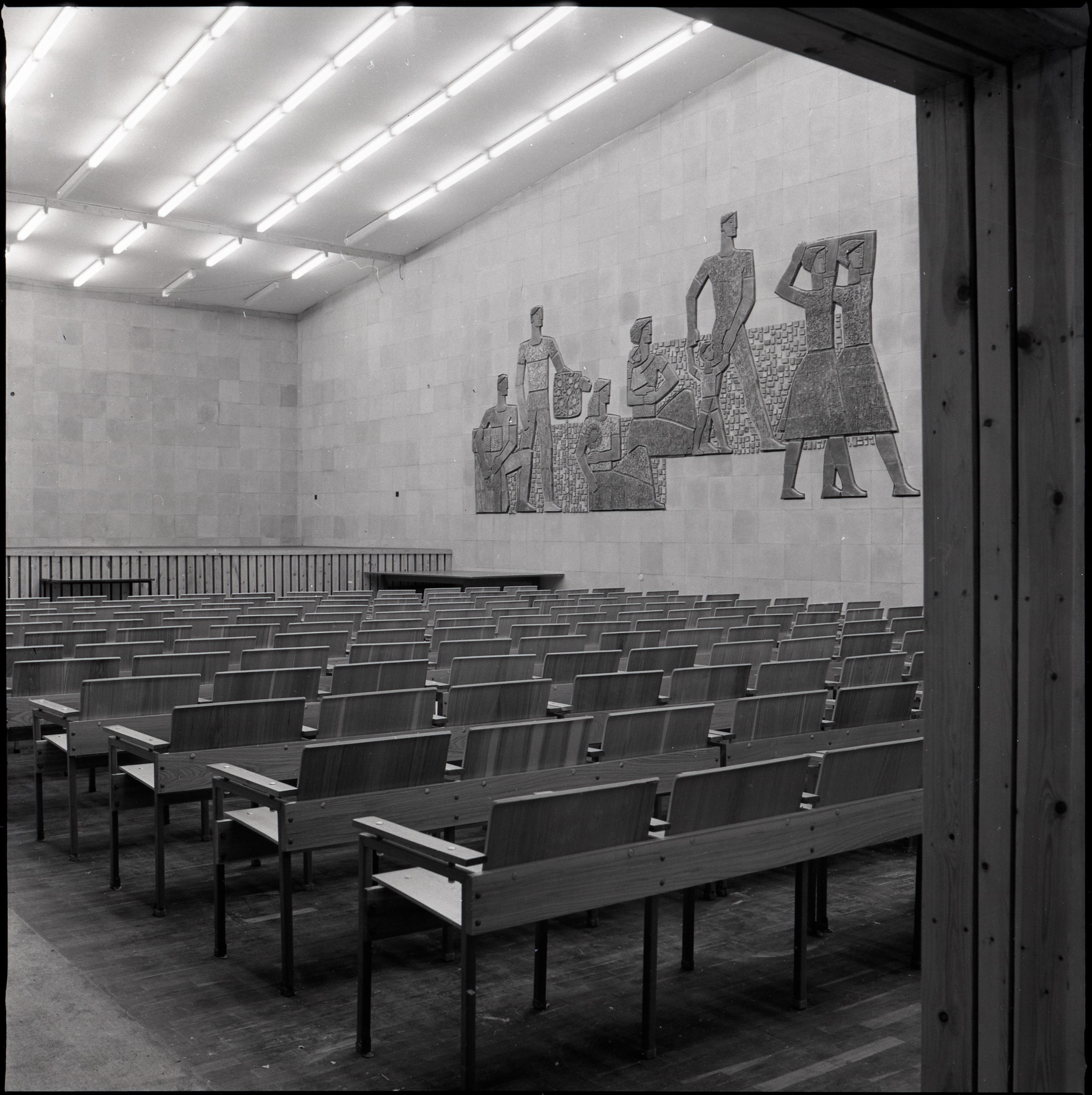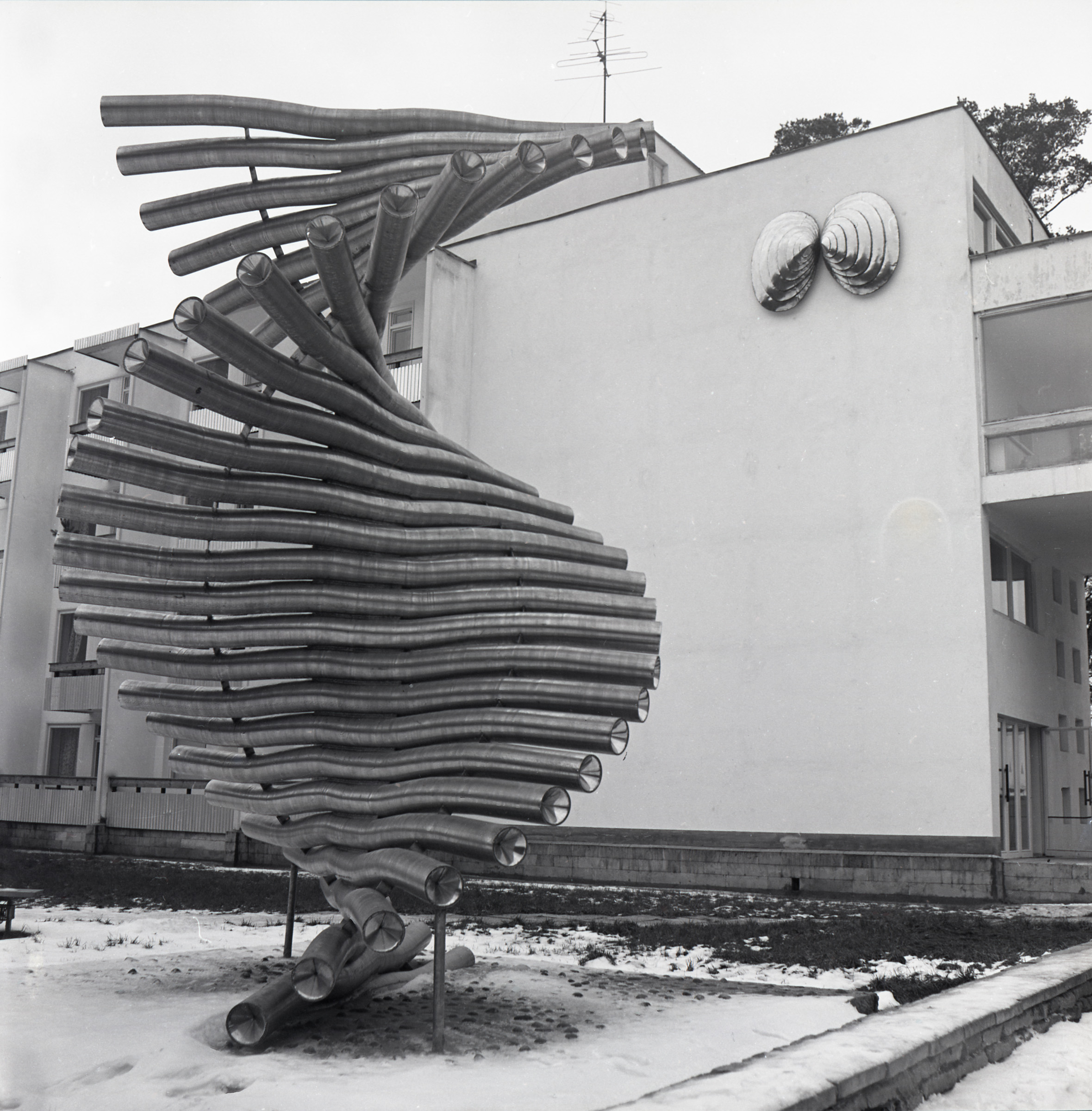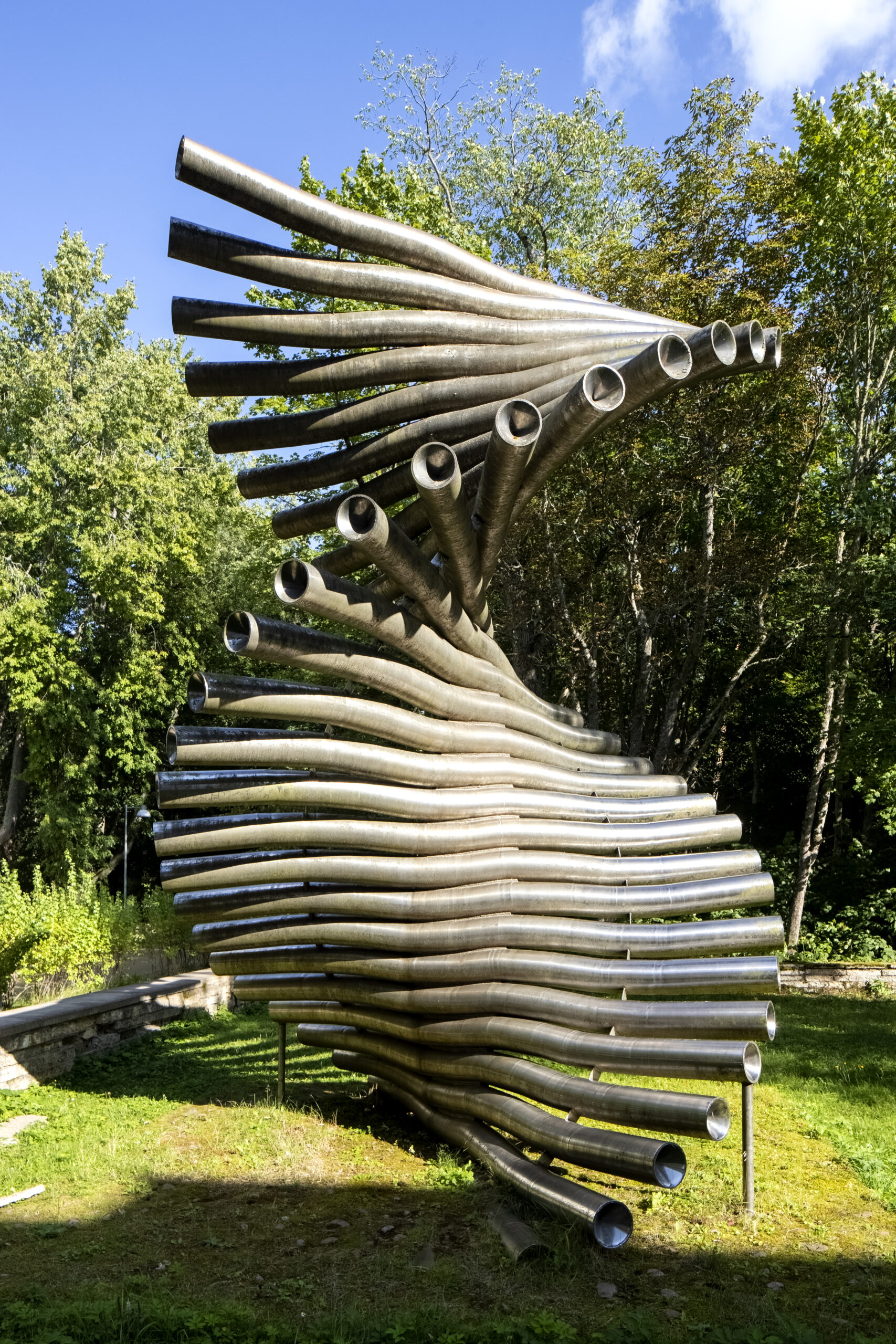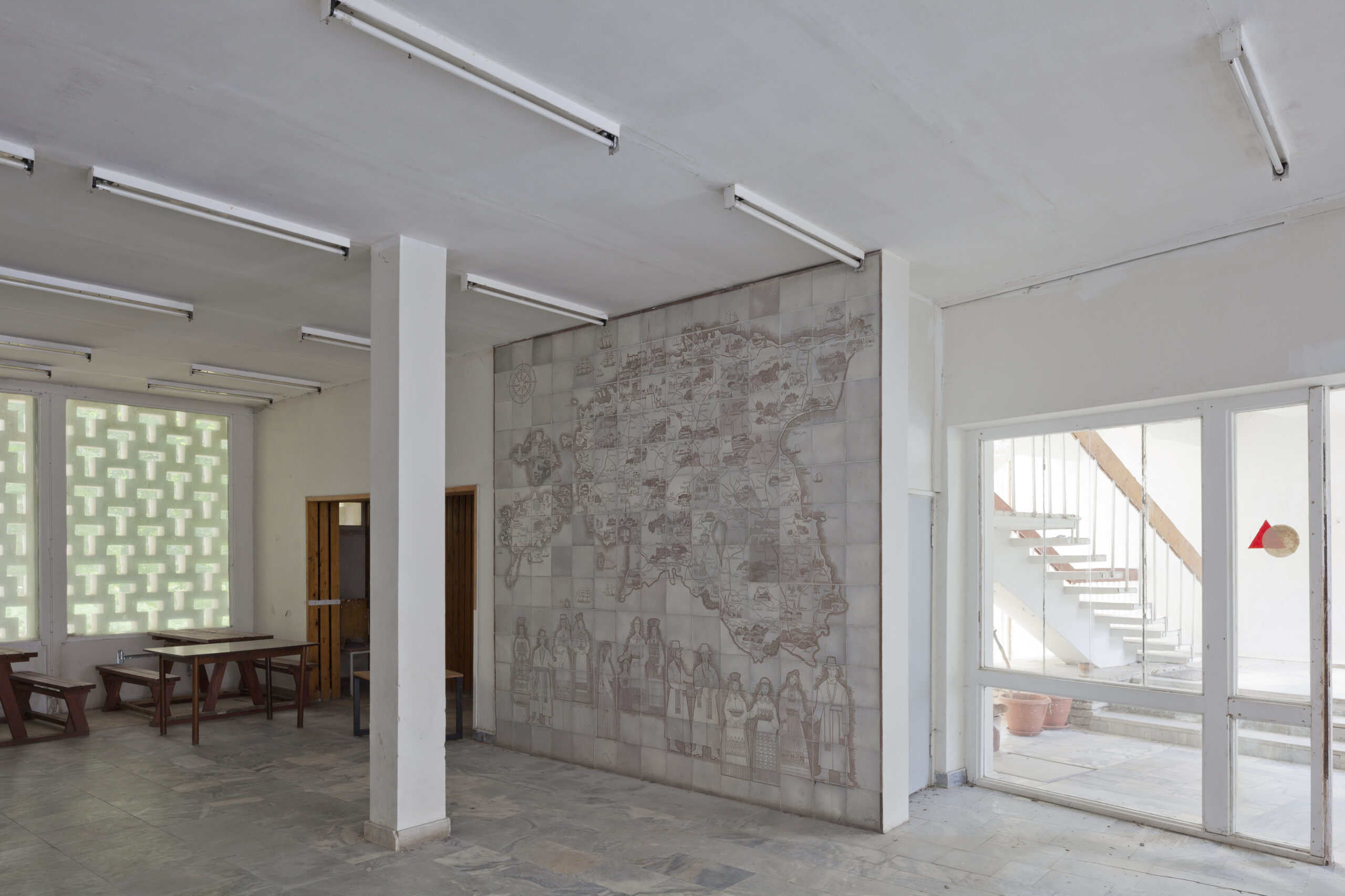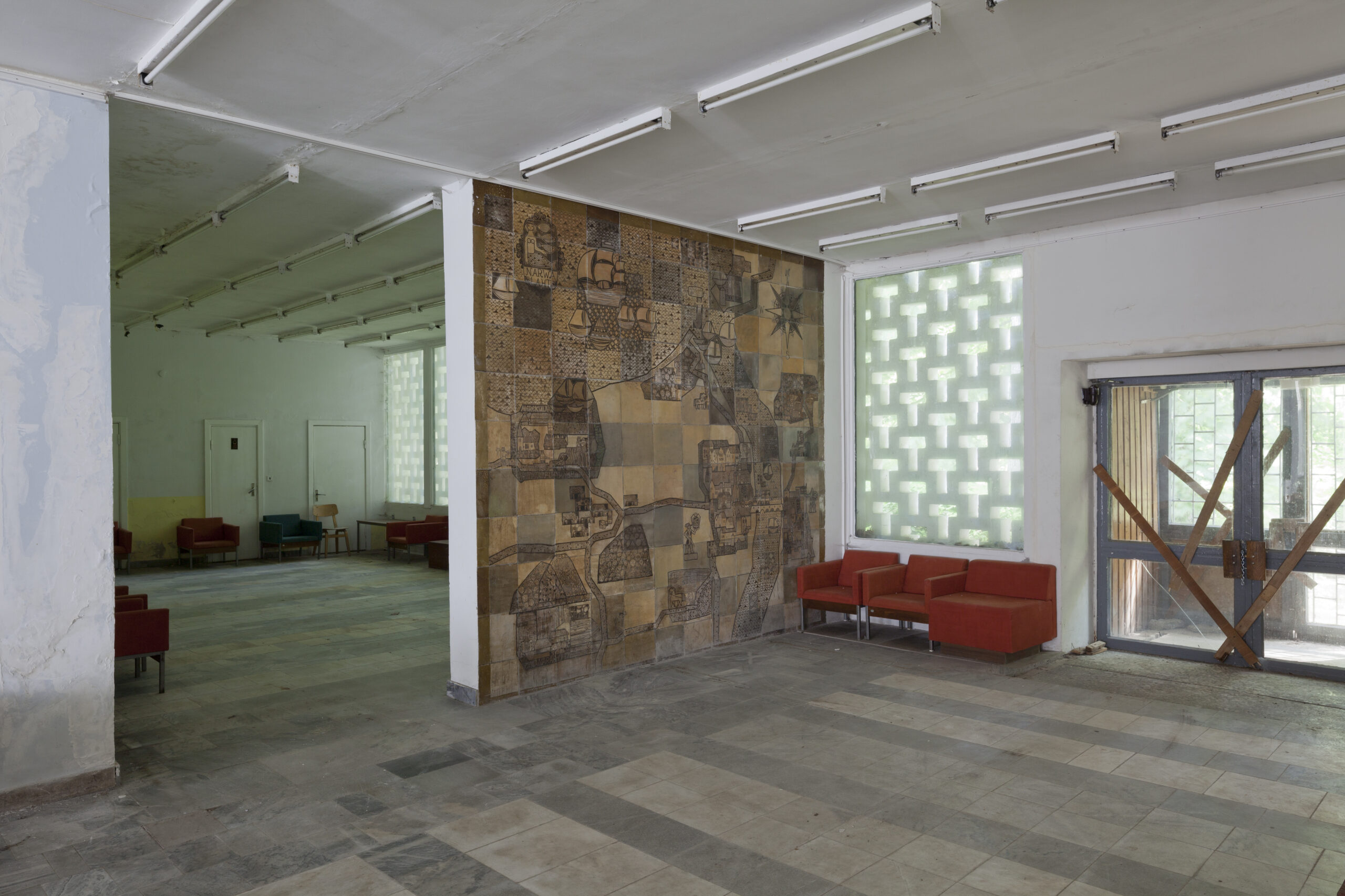Artworks in Mereranna (Seashore) Medical Spa
Years of completion: 1965–1985
Address: Ida-Viru County, Narva-Jõesuu, Aia 17 and 17A
Authors: Leo Rohlin (ceramic pannels, sgraffiti), Mkrtitš Mazmanjan (metal sculptures), Dolores Hoffmann (stained glass), Aet Andresmaa-Tamm, Mare Lobjakas (composition of the swimming pool room)
Ceramics, sgraffito, stained glass, metal, ceramics-concrete
Not listed as cultural monuments
Narva-Jõesuu, which grew into a resort settlement during the Russian Empire occupation, still increased in popularity during the Soviet Era – multiple recreation centres and medical spas were established for both local and unionwide institutions. One of the biggest and most elitist of them built at the time was Mereranna. In 1962 the Narva-based military factory Mailbox No. 2 (later named Baltijets), which was directly subordinate to Soviet powers, began work on the resort’s design. After finishing the first wing, however, it was transferred the budget of the Ministry of Medium Machine Building of the USSR. In reality, this neutrally-named ministry oversaw the Union’s nuclear and arms industry, of which the Narva factory was a part.
The complex comprising of multiple wings, constructed in the years 1969–1976, was designed by architects Pärtel Tarvas and Helgi Margna, and due to the prominent client, they were able to use new technical solutions and finishing materials deficit in the Soviet Union at the time. Considering the circumstances, in 1964 Tarvas turned to the Estonian Academy of Arts with the objective to obtain monumental art for the building, as it was popular, yet expensive at the time. The plan succeeded and the first artwork was a group of figures made of coloured grog, designed by Leo Rohlin, installed in the theatre hall of wing I. The survived fragment of the piece was completed already in 1965 as Rohlin’s final project, and portrays men, women, and children looking towards the sun. By 1969, Rohlin had also finished a sgraffito map of Narva’s surroundings for the lobby of wing I, complemented in 1985 by a map of Estonia on the opposite wall using the same technique. Rohlin also designed a lattice sphere sculpture, which was placed next to the entrance of wing I.
A metal sculpture reminiscent of a seashell (a sea wave, according to another description) was designed for the front of wing II, as well as two side-by-side seashell figures for the wing’s wall, by Armenian-origin sculptor Mkrtitš Mazmanjan who studied in Estonia. Metal sculptures could also be seen indoors and in the courtyard of wing I. In 1979, window-pannel Tähistaevas (“Starry Sky”), designed by Dolores Hoffmann, was installed in the lobby of wing I. The artist herself believed it to be the biggest stained-glass window in Estonia. In the same year, a composition made of different coloured ceramic tiles and concrete details was created for the pool room’s wall by Aet Andresma-Tamm and Mare Soovik-Lobjakas.
The Mereranna resort complex is one of the few Soviet Era vacation facilities in Narva-Jõesuu that has survived in nearly authentic state. As of now, the building is partially used as a hostel but remains empty for the most part. Out of the aforementioned artworks, the state of Rohlin’s sphere and Hoffmann’s stained glass is unknown; the other pieces have survived in their original position.
Madis Tuuder







